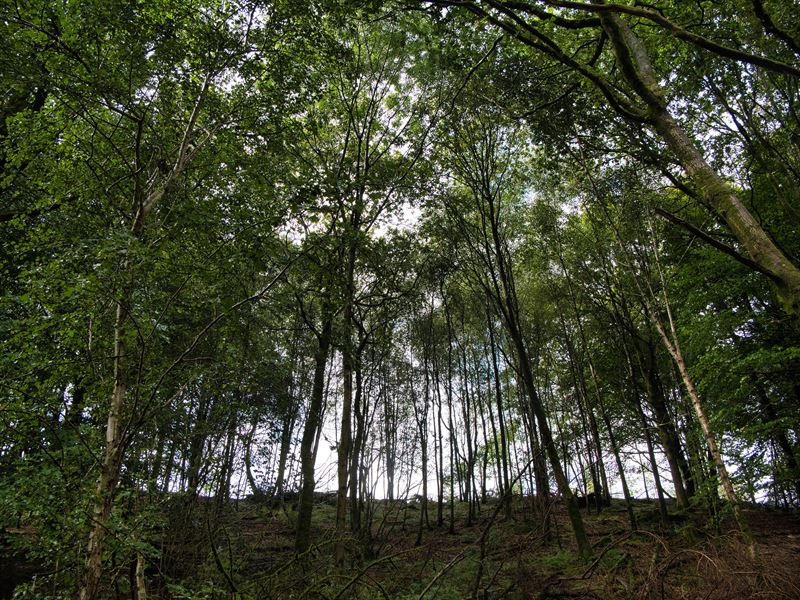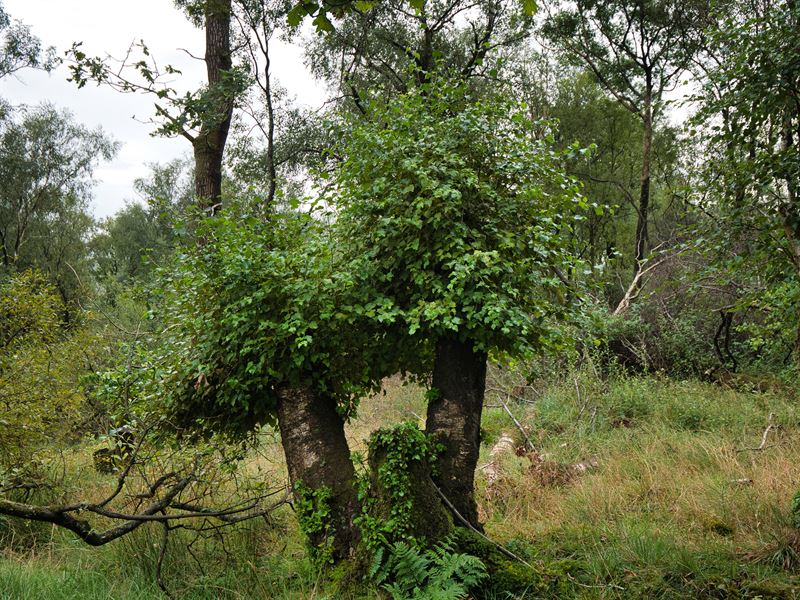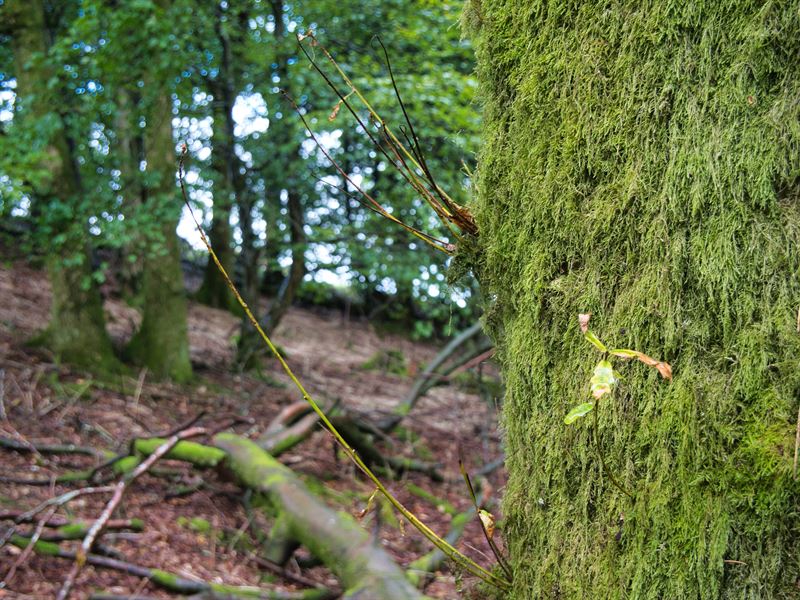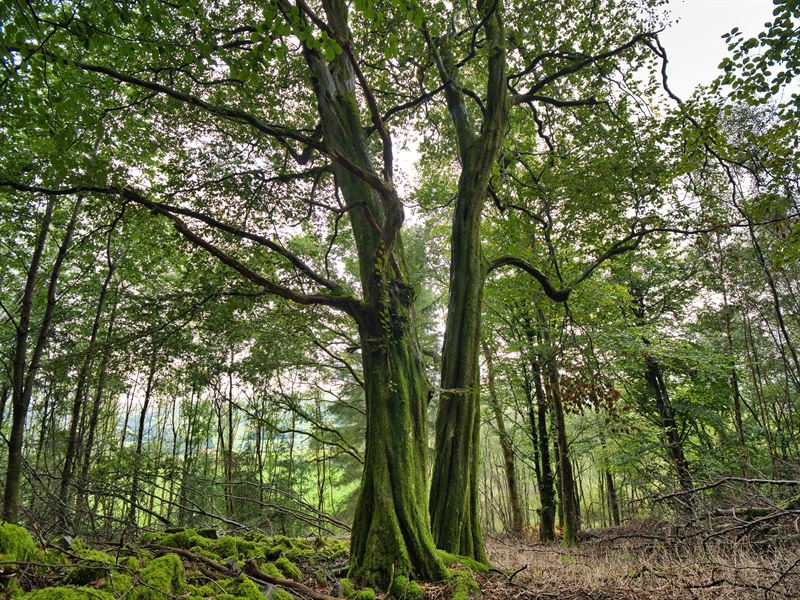Site- High Rigg Brown and Low Rigg Brown
Area- 8.23ha (part of woodland in a wider estate)
Objectives- Enhance Biodiversity, and increase habitat.
Years in management- Decades (exact timescales unknown)
Overview- ASNW and PAWS mix. A mix of existing beech and conifer plantation, wet woodland, and base-rich Ash woodland, and also includes pre-plantation trees in some areas.
Threats- Rhododendron, some conifer, some shading plantation species such as beech, deer pressure.


In the woodland world, the aftermath of a storm can create a cocktail of danger, apprehension, sadness and fear but it can also breathe new opportunities into woodland compartments. The situation differs greatly over an affected landscape, depending on the pre-existing woodland cover, age, species, wind firmness and of course the speeds and direction of winds. An un- thinned plantation might either be flattened or escape unscathed and yet a well-thinned wood will often see further gaps appear, but one thing is certain – the opportunity to reconsider management decisions is abruptly brought forward, learning from events past.
Storm Arwen (Nov 2021), brought about windspeeds of over 90mph, causing loss of power to hundreds of thousands of homes and the loss of several million trees. Aberdeenshire was regarded as the worst area affected, however, the storm passed through Cumbria and on into Wales, causing damage on the way. Rigmaden Estate was affected, with several woodland areas seeing the damage.
The estate woodlands include plantations and mixed native woodland including both Ancient Semi-Natural Woodland (ASNW) and Plantation on Ancient Woodland Sites (PAWS).
As a consequence of the storm, a range of choices were on offer and the estate wanted to do right both from silviculture and biodiversity angles. There has been halo thinning of beech trees from around the oaks, which is a twofold approach to let the oak grow on, potentially for timber use in the future, but also to increase deadwood habitat in the PAWS compartments.


We were invited to come to the woods after the storm and help consider the options for the next steps of management. Despite a good management plan in place and a forestry agent, there was an opportunity for the landowner to get a further perspective and another opinion. With complex decisions to be made, this was a welcome opportunity.
"It's been a really useful process. Walking through the woods with someone who has knowledge on the tiny things and the bigger picture is literally eye-opening, you see things you haven't seen"
The woodlands are very well managed and have been part of a management plan for decades. A combination of clear felling, thinning and long-term retention create a broad range of woodland cover over a mosaic of habitats. Varying age classes and species are found over several dozen compartments including shelter belts, riparian zones, wet woodland, new planting (c20yrs) and traditional plantations of both broadleaf and conifer.
With Storm Arwen coming from the north, traditionally wind-firm edges were caught and blown, including mature oak (often a wind-firm tree) and wetland downy birch. However, the damage was generally sporadic and localised rather than extensive. A crucial discussion arose around the extraction of saleable timber and the potential risks of heavy machinery to the ground, soil and flora.
When we talked through Arwen, it was really useful to weigh up the pros and cons and whether to put a machine in there. You said ideally not as it's ASNW, but if it's the right weather and timing and it’s a sensible decision for the woods long term then you can do something with it
The opportunity to pick up blown trees has been taken where access and economics permit and of course, there has been a necessity to check and clear the roadsides/paths for safety. In other areas, these have on occasion been left for deadwood and decaying wood habitat, as part of PAWS restoration to maximise ecological integrity. A varied approach has been taken; some root plates/stumps were righted, others were cut as “stubs” (high stems) and some trees were left where they fell. Some are already growing, some decaying, but either way they benefit the woodland.


Decaying wood is hugely important to woodlands with “up to a fifth of woodland species depend on dead or dying wood for all of part of their life cycle” (UKFS). While PAWS restoration can include proactive deadwood creation, the opportunity from a storm can be that this work is in effect done without intervention, as nature intends although further work may be required to increase deadwood in unaffected areas.
Of course, after any storm, there will be areas where fallen trees are in the way or cause an inconvenience, but as at Rigmaden, the opportunity for a varied approach rather than a full-scale clean-up will be beneficial to the woodland in the long term, particularly given the decision to leave larger diameter deadwood which is of most value to biodiversity.
Rigmaden is a great example of engaging with and supporting landowners and the success created by a thoughtful and considered approach to woodland management.
The whole thing about forestry is trying to make the right decisions for 50 or 100 years... you need people to help you and guide you through making the best decisions
that we can at this moment